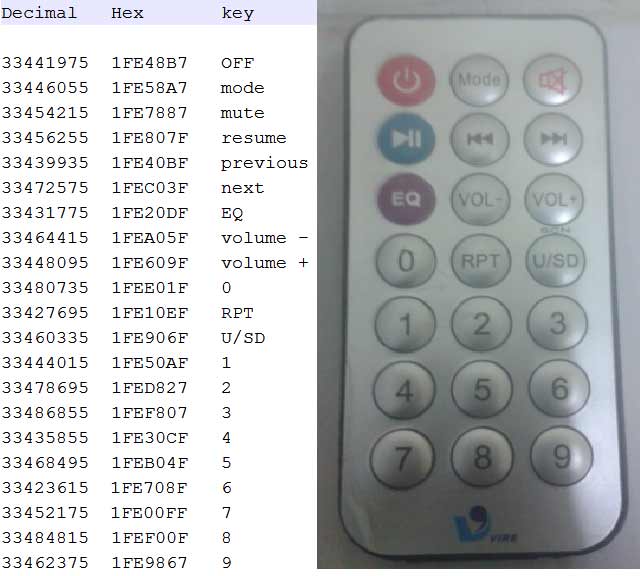

- #Rs232 avr control codes .exe#
- #Rs232 avr control codes serial#
- #Rs232 avr control codes full#
- #Rs232 avr control codes android#
At that point, best bet is to look at someone elses tutorial/project, however always do that while referring back to the google docs for what each command is doing.
#Rs232 avr control codes android#
The google android developer docs are very thorough, but sometimes can leave you wondering where to start. However, once you get the hang of using sockets on android, you'll be pleased to know that communicating via wifi is almost the same so it's worth learning. Bluetooth is handled with sockets on Android, this may seem a bit complicated at first to set up, but it's not too bad. So with that done and tested, it's over to learning to make android apps. the bluetooth module will look just like another comm port.) There's really no need to be bothered with arduino test programs unless you really want to.
#Rs232 avr control codes serial#
most laptops these days) you should now be able to pair with it, fire up a terminal program and talk to the meter just like it was connected with a serial port (i.e. Or, you can spend a bit more money and get it complete like: By hooking that up, now grab a PC with bluetooth (e.g. So as alm suggested, you can just grab any bluetooth module that supports serial protocol and wire it in with a RS232 level converter. It makes the size of the arduino community pale into insignificance comparatively. The upside to that is there's an absolute abundance of high quality tutorials on youtube to get you started, and if you get stuck there's a 99.9% chance someone has asked the same question on stackoverflow. The hard part about this one isn't anything to do with the bluetooth etc, it's getting to know android development enough to make a decent app.

Sure ok, fair point that people often swing terms around.
#Rs232 avr control codes .exe#
exe programs to the tablets? In short - give me enough info to get it done. Where do I find or how do I make a RS232 to Bluetooth thing? What is the protocol? How do I find the signal in the tablet? How do I program and compile in a tablet? Or how do I import. But - and here is the point - on this forum most people just hand out fancy words about all kinds of hi-tech modern solutions as if it was the smallest problem in the world to fix it in a few minutes. I will freeze my DIY stuff immediately - I have too much tinker-gadgets half-finished as it is. Obviously - looking at my childrens tablets - a cheap Chinese 90 USD tablet as they have is the perfect solution.
#Rs232 avr control codes full#
Three months ago I didn't know what RS232 was and used a full day to find out that I had to set DSR/DTR ? (I've forgotten already) high in order to get the DMM to send any data at all. WiFi and Bluetooth are things that I have seen in action, but know nothing about. The WiFi module could also be used to save data logs, upload predefined configuration files for various instruments and even turn the thing into a real network based GPIB port for your PC (for use in LabView or something). Now that device would show up on the LCD with real time data, plots and logging options. So you'd tell it what commands read data, change modes, trigger and so forth. So say you had a Keithley 197A multimeter you wanted to talk to you, you'd have a drop down menu for various types of instruments (DMM, Power Supply, Scope, Logic Analyzer, etc.) and after selecting that it would give you a series of boxes where you could type the GPIB command for various functions. The idea is you have a web page on the unit for configuration where you can add instruments connected to the GPIB bus. The plan was to use 7" or so touchscreen and a TI CC3000 WiFi chip. Initially I was going to use recovered NEC µPD7210 or NI NAT7210 (which are $15 drop in replacement chips) to handle the GPIB side of things and then just interface to that via an MSP430. You should add a Bluetooth to Serial module on it, that way you could move it around! (Or use one of those really cheap nL-Whatever 900MHz based serial transceivers.) I actually started work on a project similar to this awhile back, only mine is going to be a general purpose GPIB controller for older equipment. Very cool! I like the idea of adding a color screen for logging.


 0 kommentar(er)
0 kommentar(er)
